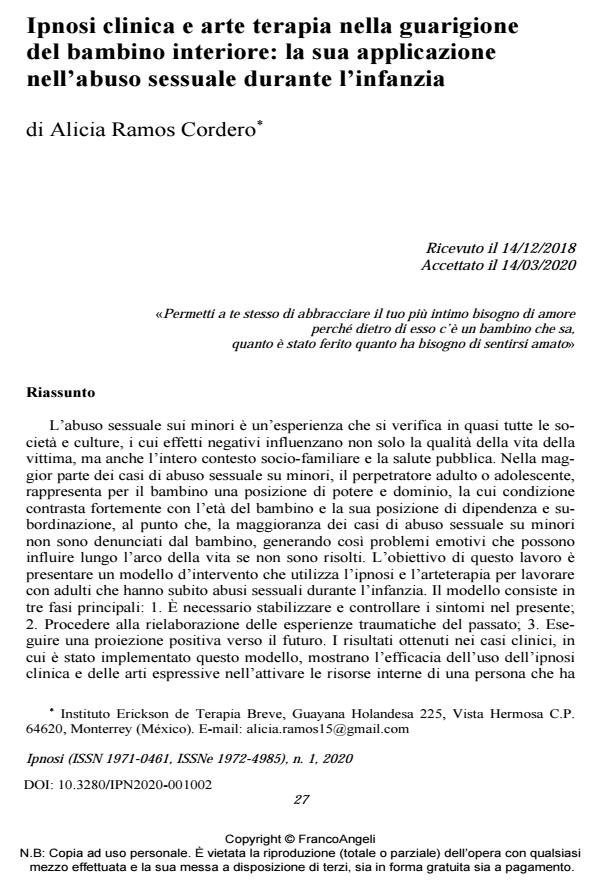Clinical hypnosis and art therapy in the healing of the inner child: application in sexual abuse during childhood
Journal title IPNOSI
Author/s Alicia Ramos Cordero
Publishing Year 2020 Issue 2020/1
Language Italian Pages 22 P. 27-48 File size 496 KB
DOI 10.3280/IPN2020-001002
DOI is like a bar code for intellectual property: to have more infomation
click here
Below, you can see the article first page
If you want to buy this article in PDF format, you can do it, following the instructions to buy download credits

FrancoAngeli is member of Publishers International Linking Association, Inc (PILA), a not-for-profit association which run the CrossRef service enabling links to and from online scholarly content.
Sexual abuse on children is an experience that occurs in almost all societies and cultures, whose negative effects affect not only the quality of life of the victim, but also influence the entire socio-family context and public health. In most cases of child sexual abuse, the adult or adolescent perpetrator represents a position of power and domination for the child, whose condition strongly contrasts with the age of the child and his position of dependence and subordination, so that the majority of cases of child sexual abuse are not reported by the child, thus generating emotional problems that can affect their lives if they are not resolved. The goal of this work is to present a model of intervention that uses hypnosis and art therapy to work with adults who have suffered sexual abuse during childhood. The model consists of 3 main phases: 1. It is necessary to stabilize and control the symptoms in the present; 2. Proceed with the re-elaboration of the traumatic experiences of the past; 3. Make a positive projection towards the future. The results obtained in the clinical cases in which this model was implemented show the effectiveness of the use of clinical hypnosis and of the expressive arts in activating the internal resources of a person who has undergone a traumatic experience, in order to help them recover one’s healing ability.
Keywords: Hypnosis, sexual abuse, art therapy, childhood, healing, inner child
Alicia Ramos Cordero, Ipnosi clinica e arte terapia nella guarigione del bambino interiore: la sua applicazione nell’abuso sessuale durante l’infanzia in "IPNOSI" 1/2020, pp 27-48, DOI: 10.3280/IPN2020-001002